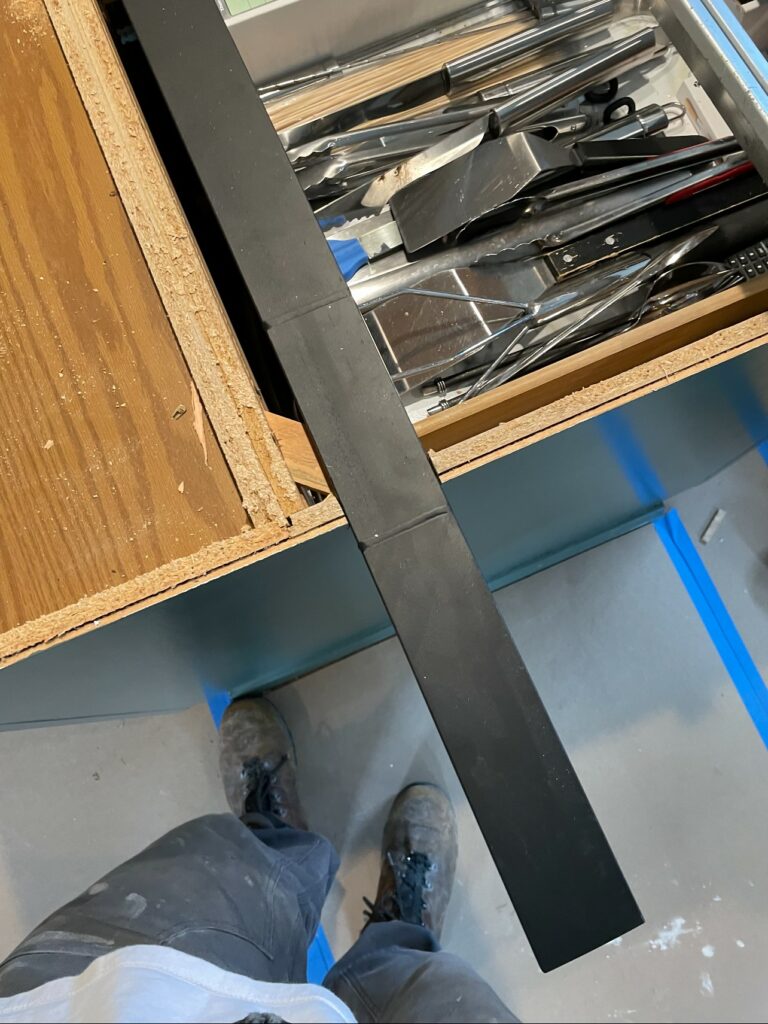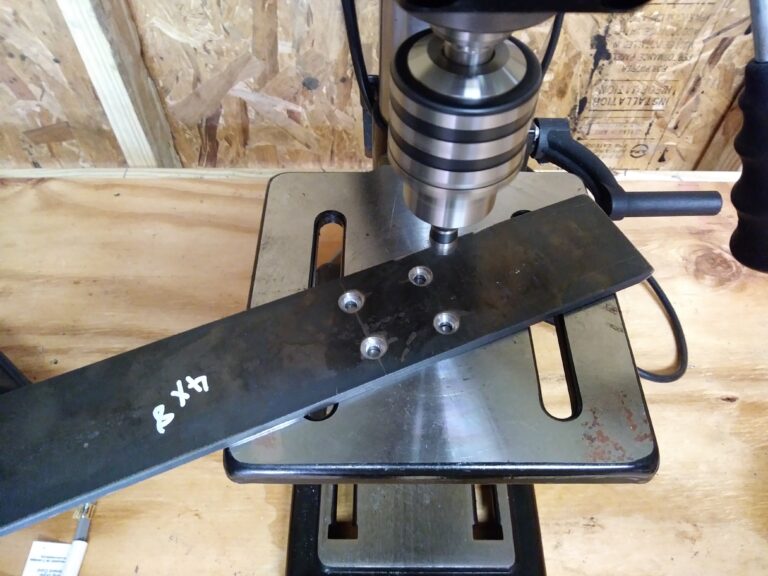Overhangs and Supports for Granite and Quartz Countertops
When installing granite and quartz countertops, it’s crucial to consider the proper overhangs and support brackets to ensure the structural integrity and functionality of your kitchen or bathroom space. Falling rocks are no joke in the South Sound area as any hiker knows, and the last thing you want is to potentially ruin those beautiful new countertops or put someone at risk of a fall hazard.
Over time the weight of your stone countertops can ever so slightly change the level of your eating place or help to pull apart a carefully hidden countertop seam. By understanding the significance of overhangs, selecting appropriate support options, and following professional installation guidelines, you can ensure that your countertops will last for years to come.

Understanding Countertop Overhangs
An overhang refers to the extension of the countertop beyond the edge of the base cabinets or supporting structure. Overhangs serve both functional and aesthetic purposes and can significantly impact the overall design and usability of your countertops.
- Standard overhang length: The standard overhang length for most countertop materials, including granite and quartz, is around 1.5 inches to 2 inches past the cabinet. This helps to prevent liquids from spilling onto the face of the cabinets. Larger overhangs (10-16 inches is common) provide a comfortable space for bar stools or dining chairs.
- 6-inch overhang maximum for 2cm Granite
- 10-inch overhang maximum for 3cm Granite
- 12-inch overhang maximum for 2cm Quartz
- 12-inch overhang maximum for 3cm Quartz
- Functional considerations: Larger overhangs can provide extra space for seating, making your kitchen or dining area more comfortable and versatile. However, it’s important to ensure that there is enough legroom for individuals sitting at the counter. Additionally, consider the countertop’s thickness, as thicker slabs may require additional support for extended overhangs. Thicker slabs = more weight.
Importance of Stone Countertop Supports
Supports play a critical role in maintaining the stability and strength of your granite or quartz countertops. The unsupported portion of the overhang can never be more than 1/3 the width of the entire countertop. Without proper support, countertops may sag, crack, or even collapse over time.
- Types of supports: There are various support options available, each suited for different countertop configurations and requirements. Some common support types include:
- Brackets and corbels: Metal brackets or decorative corbels are commonly used to support overhangs. Wooden corbels are an older style support, which still work just fine in many remodels! You may have them in your home already. They can be attached to the wall or hidden within the cabinet structure, providing excellent support while maintaining a clean aesthetic.
- Hidden support systems: These specialized support systems are installed underneath the countertop, providing strong and nearly invisible support. They are particularly useful for longer overhangs or areas where brackets or corbels might obstruct movement.
- Calculating support placement: Determining the correct placement of supports is crucial to evenly distribute the weight and minimize stress on the countertops. It’s recommended to consult with a professional installer or contractor to ensure the correct placement and selection of support options based on your specific countertop dimensions and material. Countertop brackets are generally spaced 18 – 24 inches apart. Start with a bracket at each end of the countertop set 4 – 6 inches away from the endpoint of the countertop.
Countertop Overhang and Support Installation Tips
Proper installation of overhangs and supports is vital to ensure the longevity and functionality of your granite or quartz countertops. Consider the following tips:
- Seek professional guidance: Working with an experienced installer or contractor who specializes in countertop installations is highly recommended. They can provide valuable advice on selecting appropriate supports, calculating overhangs, and ensuring a secure installation.
- Follow local building codes: Before proceeding with the installation, familiarize yourself with the local building codes and regulations. Building codes may specify minimum overhang lengths, support requirements, and weight limitations to ensure safety and compliance.
- Regular maintenance and inspection: After installation, regularly inspect your countertops for any signs of sagging or damage. Maintain proper care and cleaning routines as recommended by the manufacturer to keep your countertops in optimal condition.
Conclusion
Choosing the right overhangs and supports for your granite or quartz countertops is essential for maintaining their structural integrity and enhancing their usability.
Feeling a bit lost about where to start with ordering new countertops? Check out our full countertop buyer’s guide here.
Too much work? Tops can supply and install overhang supports for your countertops! Talk with a Tops designer about it today!
